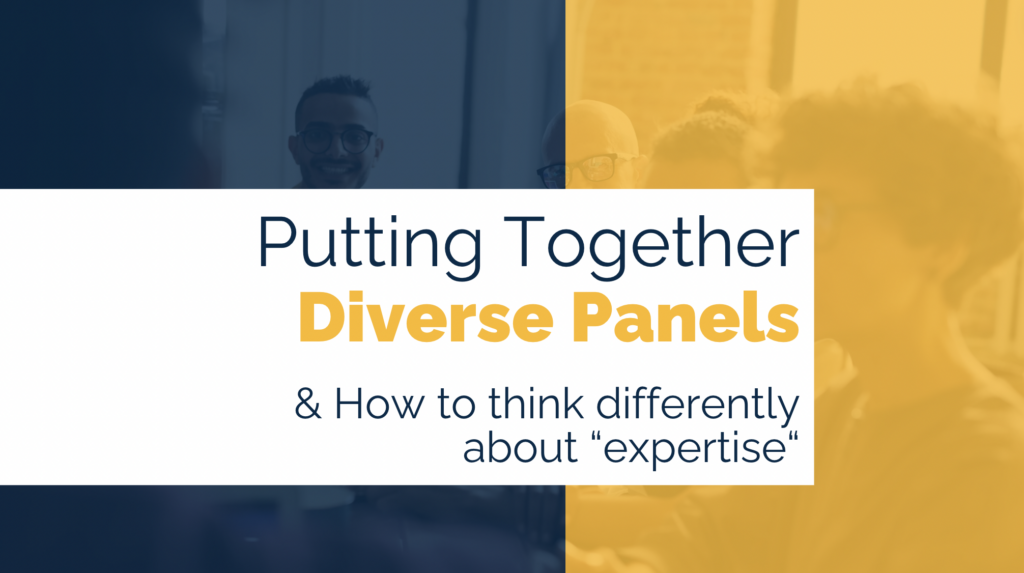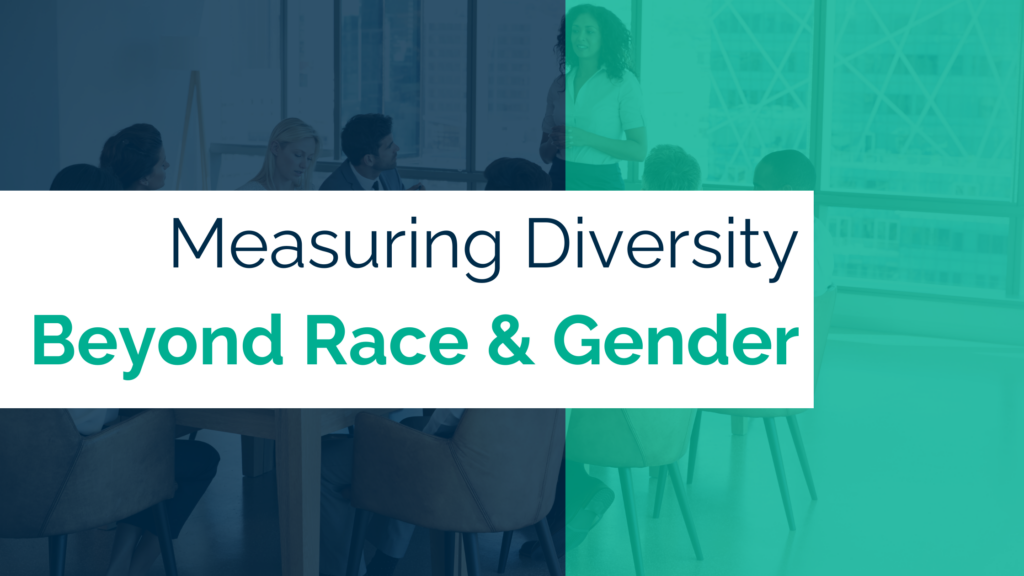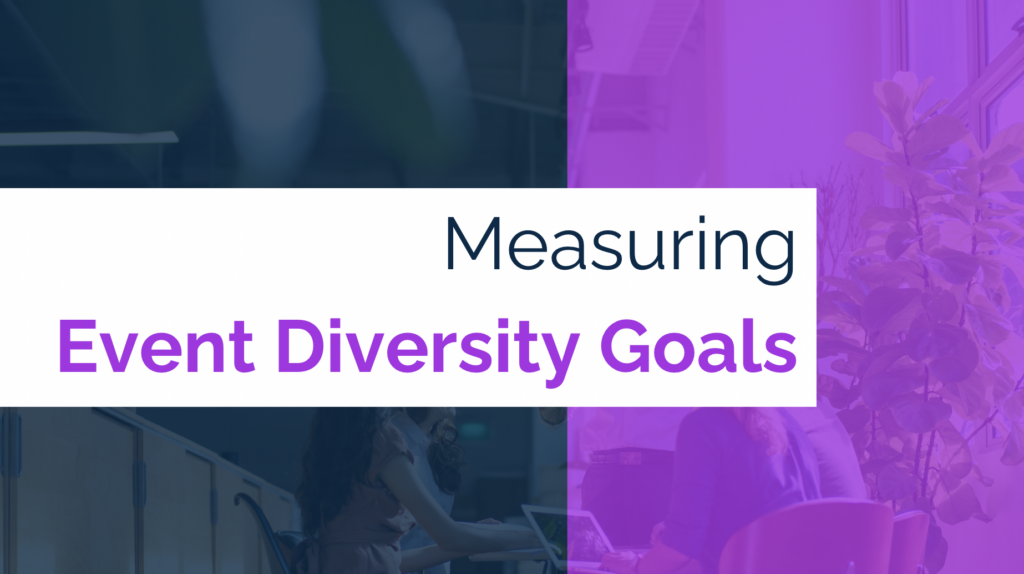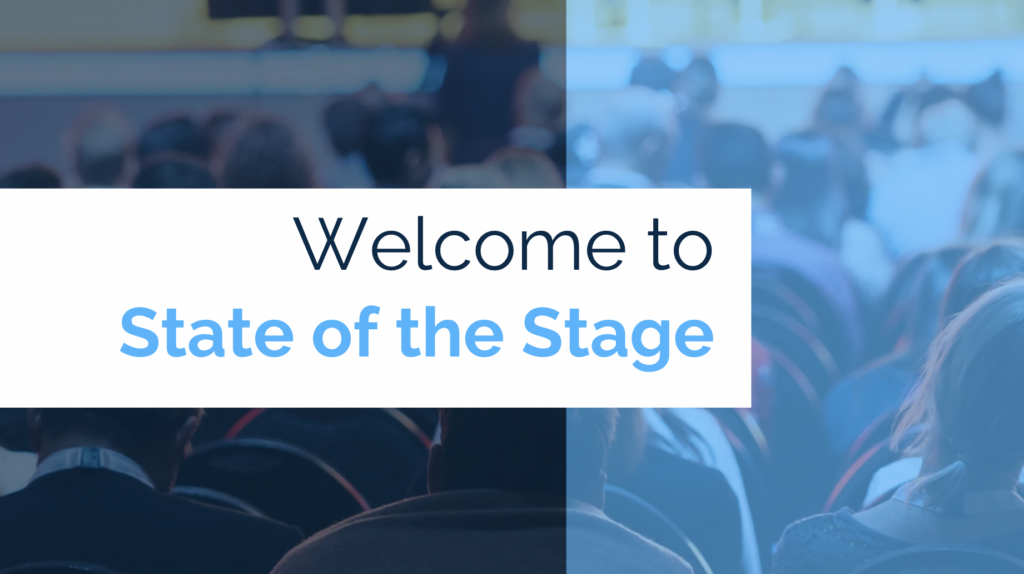State of the Stage
Measuring Diversity Beyond Race & Gender
March 2024

In a recent article, we talked about the basics of measuring conference agenda diversity for racial and gender representation.
Today let's discuss considerations for going beyond basic race and gender analysis, to look at other types of identity, diversity, and representation.

Ask Out Loud Question:
In addition to race and gender, shouldn't we also be looking at diversity in terms of having speakers from the LGBTQ+ community, or people with disabilities, or veterans? And if so, how do we ask speakers for that information?
The Short Answer:
When we work with conference organizers we urge them to consider the representation and visibility of other identities as well as race and gender - disability, sexual orientation, neuro-divergence, and more (longer list below). But just thinking about all the various factors of diversity - let alone gathering data on each factor from each speaker - can feel overwhelming. Below we share best practices to consider.

Before we get into those best practices, let me remind you of two well-worn adages.
1. Don't let the perfect be the enemy of the good.
2. "There is only one way to eat an elephant: a bite at a time." - Desmond Tutu
If you haven't previously measured representation and diversity at an event, the most important thing to do is to get started. You don't have to gather every piece of data in your first year. In fact, we consider measuring detailed representation information a pretty advanced step. If you're just getting started, take manageable first steps. You can start my measuring the racial and gender diversity of speakers on the main stage, for example. As a quick reminder, the first 3 steps we recommend for measuring conference speaker diversity are:
>> Basic: Measure Broad Speaker Demographics
>> Intermediate: Review Your Content
>> Advanced: Measure & Track Visibility
And now, for the 4th level, and those best practices:
>> Collecting Detailed Representation Information
To get a broader picture of representation, consider asking for information about a wide range of identities. Instead of looking at data in terms of representation of white speakers and people of color speakers, you can ask for more specific racial and ethnic identities. Go beyond race and gender by measuring representation of additional types of identities. For example, you can consider representation by members of the LGBTQ+ community, people with disabilities, veterans, immigrants, caretakers, and many others. We'll talk about some best practices for collecting identity info (psst - it's self ID!) and how to facilitate that collection.
First, let's look at some examples!
In the boxes below, you can see some of the identity details that the speakers on Choir's Voices platform can choose to share.
Gender
Race & Ethnicity
Broad
Race & Ethnicity
Detailed
This is a sample of the subgroups from just one of the six broad race & ethnicity groups we use.
Additional Identities
Best Practices for Collecting Detailed Representation Information
The Importance of Self ID
The best way to find out accurate information about someone is to ask them. Asking people about their race, gender, or any other part of who they are is often referred to as self identification or self ID.
If you are looking to review this data for your speaker lineup, you can ask speakers to share the information you are collecting if they feel comfortable doing so.
What Data to Ask For
Each organization should consider what information is important to collect. If representation from a particular group or community is important to your organization, the best way to see how you are doing in that area is to measure your goals by collecting and reviewing the data! Ask for and collect just the information that is useful to your purposes so you don’t overwhelm people with questions and run the risk of "survey fatigue."
Each organization may have unique data needs - both in the representation goals they are evaluating, and how they categorize the data.
- As an example, you can see how Choir asks for additional identities in the yellow box above. We list all of these identities and people can toggle on any that apply to them and they want to share. This format is set up to serve our specific needs.
- Some organizations break out sexuality into it's own question (more on that below), or have unique questions about religion, disability, or family background.
- Some organizations ask about age, nationality, education, and other identity components that Choir does not ask about.
Tell People Why You’re Asking
Tell people why you are asking for this data. We've found that this step can be one of the most challenging due to people's fears of saying the wrong thing.
Here is sample wording that you can adapt to your liking:
"The XYZ conference is committed to featuring the voices of experts and leaders from a variety of backgrounds. In the following questions we'll ask you for information about your race, gender, and several identity and cultural questions. Please answer only those you are comfortable sharing. We use this data to review how well we did in our efforts to source speakers from a wide range of identities, and to inform us where we may have gaps in our networks."
How to Gather the Data
When gathering data for a lot of people at once, as you might be doing for a speaker lineup, self ID is usually easiest via a form that speakers can fill out.
Ideally, choose a form building program that:
- allows people to select multiple answers to one question. For example, someone may want to indicate that they are both Black and Latino.
- allows for write-in options, in lieu of having a catch all "other" category.
- allows for some questions to be optional/ not required to submit the form.
Optional Vs. Required Questions
For each identity question you ask, consider whether the answer should be required or optional. Similar to sexual orientation questions (see more in that section below), people may not be comfortable answering questions about disability, religious affiliation, citizenship, etc.
No "Other" Categories Please!
There's no way to reduce people's full identities into answers to multiple choice questions. But, we can do our best to balance knowing more about each person and collecting sortable data.
When you give people the opportunity to share their identity with you, please don't present them with a list of options, one of which is "other." Nobody wants to be labeled Other.
You likely won't be able to list all options for some categories though. Instead list the most common options, and include an option for "identity not listed above" or similar wording, ideally with an option to write in additional information.
Tips for Specific Identity Questions
Gender
- Ask for gender (an identity - use terms like Woman, Man, Non-Binary), not sex (biological).
- Include Non-binary and/or genderqueer as an option.
- Consider including an option for "gender not listed here" and a space to specify.
Race & Ethnicity
- As I mentioned above, allow for people to choose more than one race/ ethnicity and please don't have an "other" option.
- In the example data boxes above, you can see that on Choir's Voices platform, we first ask speakers to share identity info for broad race & ethnicity categories (purple box). Based on their answers to that initial question, we allow people to share more detailed information (see example in the green box).
- Because we have not listed every possible race or ethnicity, we allow people to add new groups (which we review). The ability to add identities (as opposed to clicking "other") is a key component of inclusive data collection.
- Again, even in more detailed race and ethnicity data collection, allow speakers to choose more than one response.
Asking About Sexual Orientation
- If you are looking for representation of the LGBTQ+ community, you'll likely want to ask a question about sexual orientation. Please make sure this question is optional, and is not a question that is required in order to complete the survey.
- Not everyone in the LGBTQ+ community is ready to be "out" at work; unfortunately it can still be dangerous or increase the likelihood of discrimination against them.
- Even if the data you are collecting is confidential, this should still be optional so that people only share the parts of their identity that they are comfortable sharing.
Now What?
Review the Data
Once you have collected data, it's time to have a look at it!
- Consider your reasons for gathering data and review your findings against your goals.
- Put the pieces together and review again. For example, you may find that
- Your event has excellent representation from the queer community, but almost all of the speakers who indicated they are part of the LGBTQ+ community are white.
- The conference speaker lineup is relatively equitable in terms of gender, but after combining race and gender data for each speaker you see that there are no Latina women speakers, despite Latina women making up 9% of the US population.
Learn from Your Findings
To be clear, there's no way to get a perfectly representative speaker lineup. Ideally you're sourcing experts from a wide network and diverse a diverse array of places and groups. Hopefully, that begets a speaker lineup that includes people with a variety of backgrounds and identities, each informing the speaker's unique perspective.
Once you start collecting and reviewing data, you'll be able to see which groups are well represented as well as those that lack representation. Knowing where you lack representation allows your agenda committee to seek out experts from the underrepresented group to listen to and learn from, and intentionally expand the network from which the conference sources speakers for future events.




